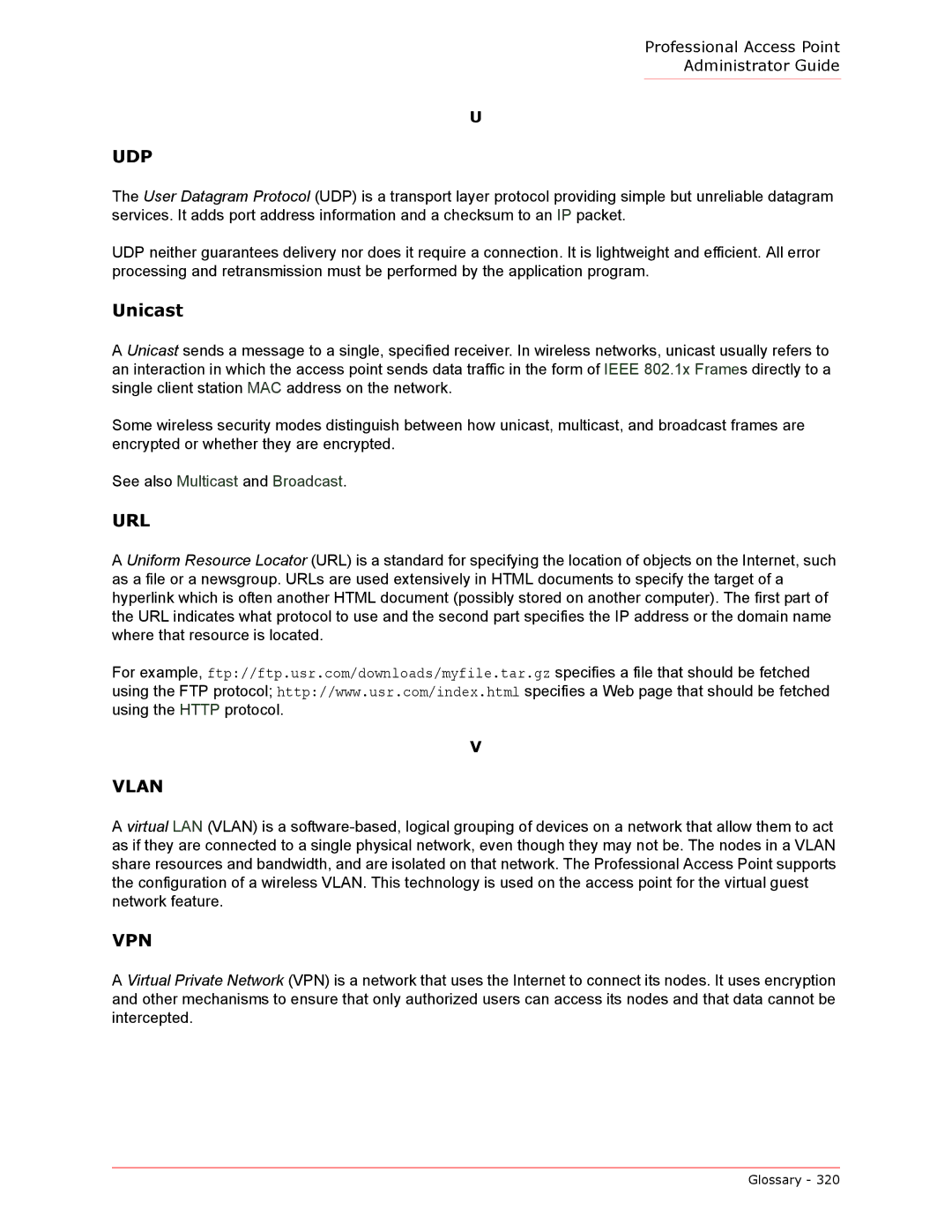
Professional Access Point
Administrator Guide
U
UDP
The User Datagram Protocol (UDP) is a transport layer protocol providing simple but unreliable datagram services. It adds port address information and a checksum to an IP packet.
UDP neither guarantees delivery nor does it require a connection. It is lightweight and efficient. All error processing and retransmission must be performed by the application program.
Unicast
A Unicast sends a message to a single, specified receiver. In wireless networks, unicast usually refers to an interaction in which the access point sends data traffic in the form of IEEE 802.1x Frames directly to a single client station MAC address on the network.
Some wireless security modes distinguish between how unicast, multicast, and broadcast frames are encrypted or whether they are encrypted.
See also Multicast and Broadcast.
URL
A Uniform Resource Locator (URL) is a standard for specifying the location of objects on the Internet, such as a file or a newsgroup. URLs are used extensively in HTML documents to specify the target of a hyperlink which is often another HTML document (possibly stored on another computer). The first part of the URL indicates what protocol to use and the second part specifies the IP address or the domain name where that resource is located.
For example, ftp://ftp.usr.com/downloads/myfile.tar.gz specifies a file that should be fetched using the FTP protocol; http://www.usr.com/index.html specifies a Web page that should be fetched using the HTTP protocol.
V
VLAN
A virtual LAN (VLAN) is a
VPN
A Virtual Private Network (VPN) is a network that uses the Internet to connect its nodes. It uses encryption and other mechanisms to ensure that only authorized users can access its nodes and that data cannot be intercepted.
Glossary - 320
